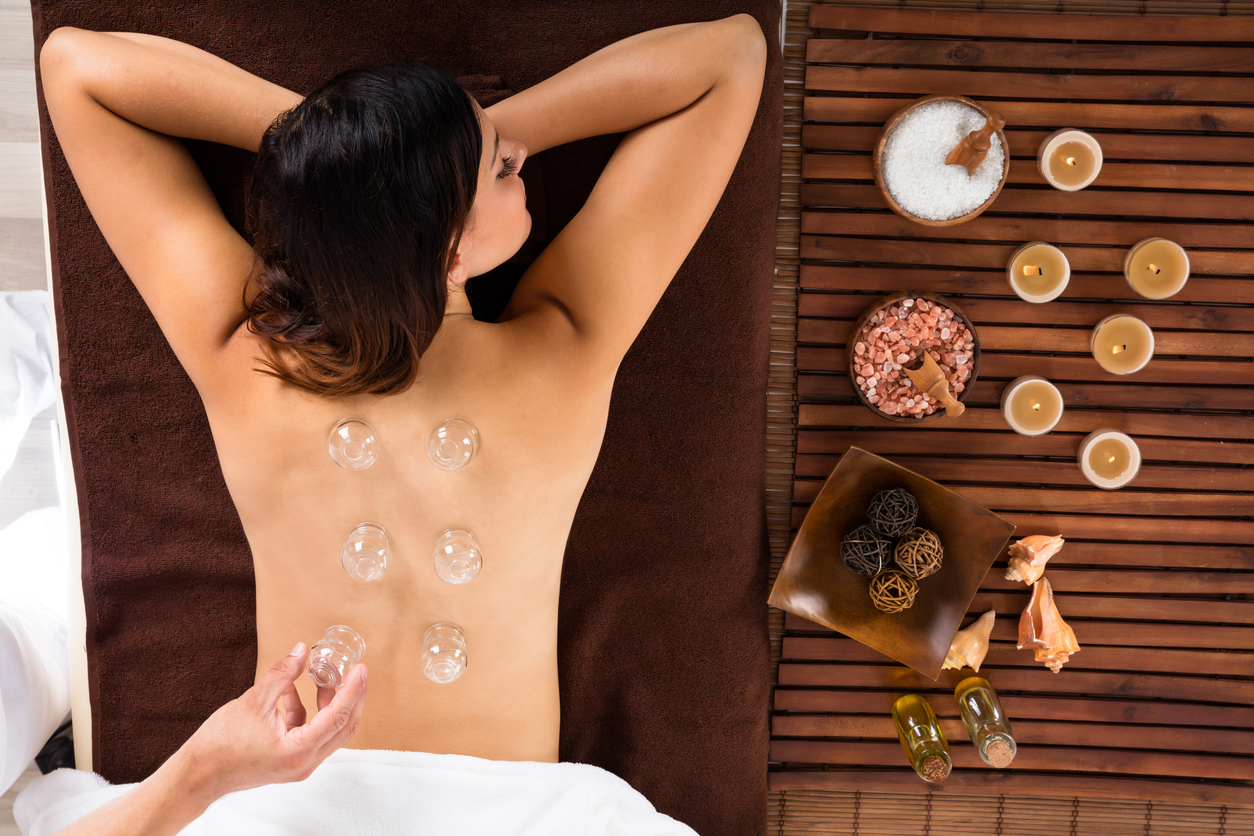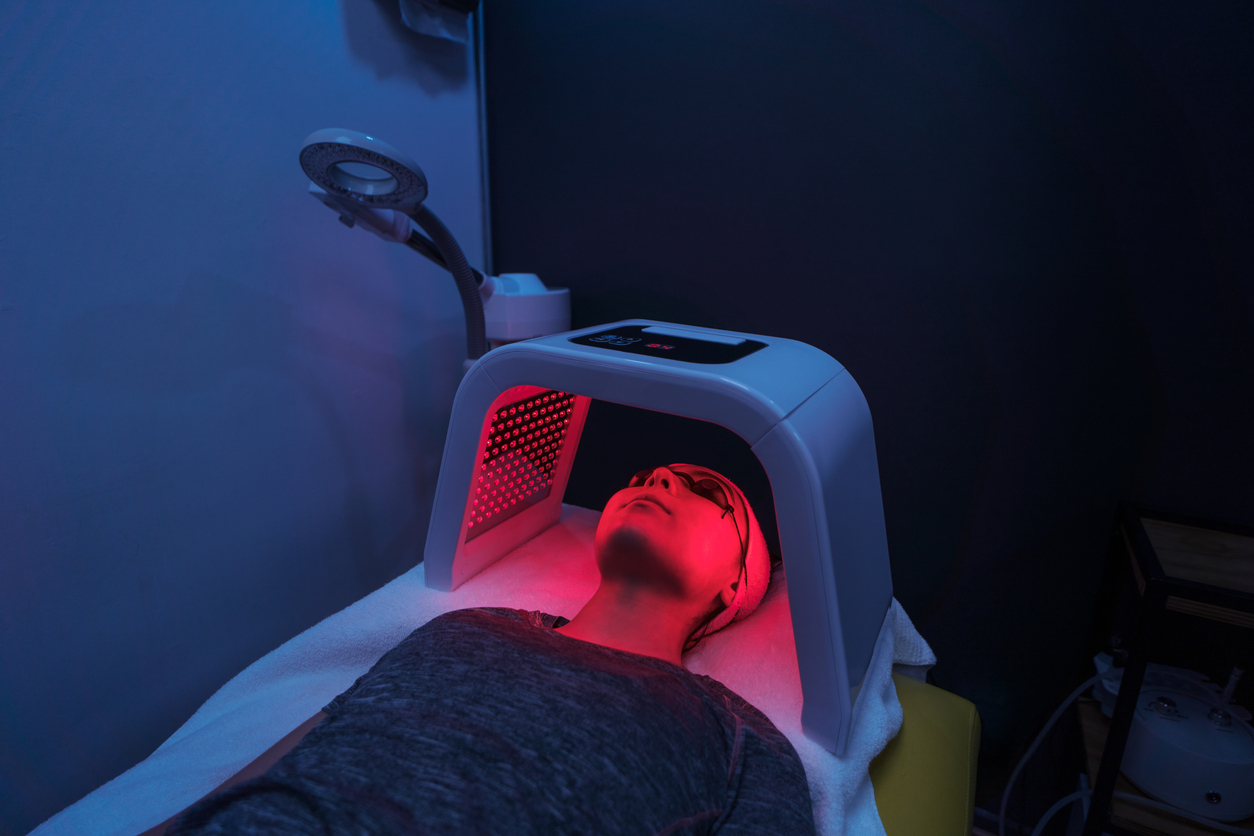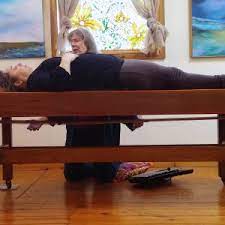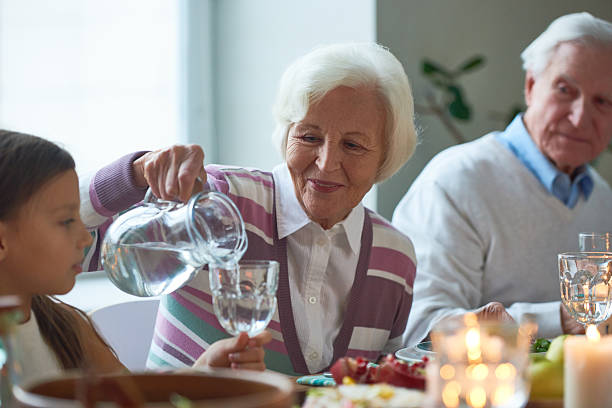Cupping Therapy is an ancient alternative healing technique that originated in ancient Chinese, Egyptian, and Middle Eastern cultures. The Therapy involves placing cups on the skin to create suction, which can help to promote healing and relaxation.
How does cupping therapy work?
Qi (氣 qì) is an energy that permeates everything around us. The quality of Qi determines the state of one’s health and life span. The Yin (negative/passive/dark/water) and Yang (positive/active/bright/fire) are fundamental concepts in Taoism and traditional medicine. Yin and Yang possess traits of each other; they are conflicting yet in equilibrium.
The magic of cupping therapy is valuable for restoring the balance between Yin and Yang. It strengthens the body’s resistance, removes pathogenic factors, and enhances blood circulation to alleviate pain. Cupping Therapy involves the application of a cupping glass to a specific skin area, and a vacuum is created by either automatic withdrawal or thermal cooling of the trapped air underneath the cup. This process helps to extract contaminated blood from the body and overcome potential adverse effects, ultimately promoting physiological well-being.
Cupping is the practice of placing a glass on the skin and pulling it inward, causing increased blood flow, heat, and redness in the affected area. Additionally, the cupping flame builds suction that helps localize the treatment to the desired body part. The primary effects of cupping are believed to be to improve local blood circulation and relieve painful muscle tension. It does this by improving microcirculation, promoting repair of capillary endothelial cells, accelerating granulation formation, and promoting angiogenesis in surrounding tissues. These effects help reinstate the patient’s functional status and stimulate progressive muscle relaxation.
How did cupping therapy evolve?
Initially, the age-old art of cupping was performed using animal horns. Bamboo cups were first introduced as the custom developed, followed by ceramic cups.
In the early days, suction was predominantly generated through the utilization of heat. Cups were initially heated to create suction with fire and then placed on the skin. As the cups gradually cooled, they would cause the skin to be drawn inward.
In the contemporary era, the widely accepted technique of cupping is executed with glass, plastic or silicone cups that take on a bell shape.
In contemporary times, there exist four primary genres of cupping that are practiced:
What specific types of cupping exist?
Dry cupping is a noninvasive technique that employs suction exclusively without bloodletting. Oxygen is removed using heat or an air pump, causing vacuum suction when a cup is placed on the skin.
Wet or bleeding cupping is an invasive technique that employs the use of both suction with bloodletting. A needle lightly punctures the skin before cupping allowing the toxins to leave the body through the small incisions.
Running cupping is performed by applying oil to a specific area and then moving suctioned cups around that area to massage it.
Flash cupping entails the rapid and repeated application of suction cups to a particular area of the body, followed by their release.
Acupuncture needles are a crucial element of traditional Chinese medicine that are inserted into particular body points to induce the flow of energy, or Qi, throughout the body.
Moxibustion is a practice that involves the burning of mugwort leaves.
Magnetic cups are applied on the skin following meridian lines which can discharge negative or disrupted energy from your body and heal illness.
Laser therapy. This is a drug-free natural alternative technique that involves the use of low-level lasers to penetrate the skin and target the affected area, promoting healing and reducing discomfort.
Electrical stimulation involves using small electrical currents to stimulate targeted areas of the body, which can help alleviate pain and promote healing for chronic pain or recovery from an injury.
Water cupping entails the precise and nimble manipulation of a glass or bamboo cup that only fills one-third of the way with warm water. Water cupping is used for a range of ailments such as dry coughs, asthma, localized swelling, arthritis, and pain mitigation.
Herbal cupping is a popular remedy for neck and shoulder stiffness, often linked to colds, asthma, or coughs. It involves using bamboo cups, a deep pan, metal clamps, water, fire, and herbs prescribed by a traditional practitioner.
What are cupping therapy benefits?
Let’s explore the basic application of cupping Therapy for different ailments.
Pain Relief
One of the most common applications of cupping Therapy is pain relief. The suction created by the cups can help to increase blood flow to the affected area, which can help to reduce inflammation and promote healing. Cupping Therapy is often used to treat conditions such as back pain, neck pain, and headaches.
Improved Circulation
Cupping Therapy is also believed to help improve circulation and promote detoxification. The suction created by the cups can help to draw stagnant blood and lymphatic fluid to the surface, where it can be more easily eliminated from the body. This can help to improve overall health and well-being.
Relaxation and Stress Reduction
Another benefit of cupping therapy is its ability to promote relaxation and reduce stress. The suction created by the cups can help to release tension in the muscles and promote a feeling of deep relaxation. Cupping Therapy is often used as a form of stress relief and can be a great way to unwind after a long day.
Cupping therapy can help treat the following conditions:
Lower back pain
Neck and shoulder pain
Headaches and Migraines
Knee pain
Shingles
Facial paralysis
Cough, asthma, and shortness of breath
Skin problems such as acne and hives
Cervical spondylosis
Arm pain, pain from pinched nerves in the neck
Carpal tunnel syndrome
Hypertension
Diabetes
Rheumatoid Arthritis
Cupping Therapy for sports injuries
Cupping therapy can be used to treat sports injuries such as sprains, strains, and muscle soreness. The suction created by the cups can help to increase blood flow to the affected area, which can help to reduce inflammation and promote healing. Cupping Therapy is often applied to the affected area to promote recovery and relieve pain and discomfort. Cup
Cupping marks on elite athletes at the 2016 and 2021 Olympic Games demonstrate the widespread support for cupping by sports clinical specialists and trainers. Michael Phelps, a renowned Olympic swimmer, caused controversy with his distinctive marks during the 2016 Games.
Are there any cupping therapy side effects?
Here, we will take a look at the side effects of cupping Therapy. It is possible to experience various undesirable effects. These effects may include but are not limited to dizziness, nausea, headaches, and fatigue. It is important to be aware of these side effects and to consult with a doctor if they persist or become severe.
With regards to cupping, there are few known side effects. Any side effects that may arise typically manifest during or directly after treatment, such as:
- Circular impressions that are indicative of the cups’ placement.
- Discoloration
- Dizziness
- Perspiration
- Nausea
The circular bruise marks caused by capillaries do not hurt but usually disappear within 7-10 days.
Other risks, like scarring and bruising, may occur in rare cases.
When should I avoid cupping therapy?
If you use blood thinners, avoid using cupping. Cupping should either be avoided or appropriately monitored in seniors and children due to their skin fragility. Also, do not employ cupping in the abdomen and lower back areas of pregnant women.
Avoid it if you also have the following:
Sunburned skin
A wound,
A skin ulcer,
Recent trauma
An illness of the internal organs
Weakening skin
Epilepsy
Hemophilia
History of stroke
Eczema
Psoriasis
Most medical practitioners are untrained or have limited expertise in complementary and alternative medicine (CAM). Nevertheless, informing your doctor if you decide to include cupping in your treatment regimen is a good idea.
What is the cupping therapy cost?
Factors that determine the cupping therapy cost:
By and large, cupping Therapy is a safe and efficacious treatment alternative for many people, and the cost of treatment may fluctuate based on location, Therapy needed, and other factors. If you are looking for cupping Therapy in your area, it is best to consult a certified physician and have your specific needs assessed. With the correct information, you may find a treatment for as little as $20 per session or as much as hundreds of dollars for more extensive treatments.
The cupping therapy price will vary depending on the type of treatment you receive and where you get it done. Generally, a single session can cost somewhere from $30 to $100. For a full course of treatment, you may require to pay between $100 and $200. If you only need a 30-minute session, you may find one for as little as $20. If you want multiple sessions or a couple of hours, you may need to pay up to $200.
Also, considering the price, it’s worth observing that cupping has lasting effects on the entire body.
Bottom line
Cupping Therapy is an ancient form of alternative medicine that has been used for thousands of years to promote healing and well-being. The Therapy can be applied to treat various ailments such as respiratory, digestive, and skin disorders, as well as sports injuries. While this Therapy is generally considered safe, it is important to seek out a qualified practitioner who is trained in these techniques and discuss any health conditions or concerns with your healthcare provider before trying cupping therapy.




